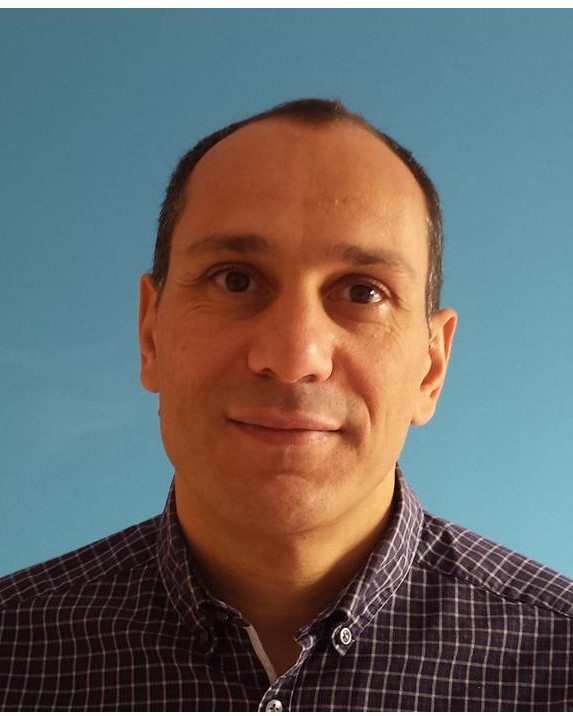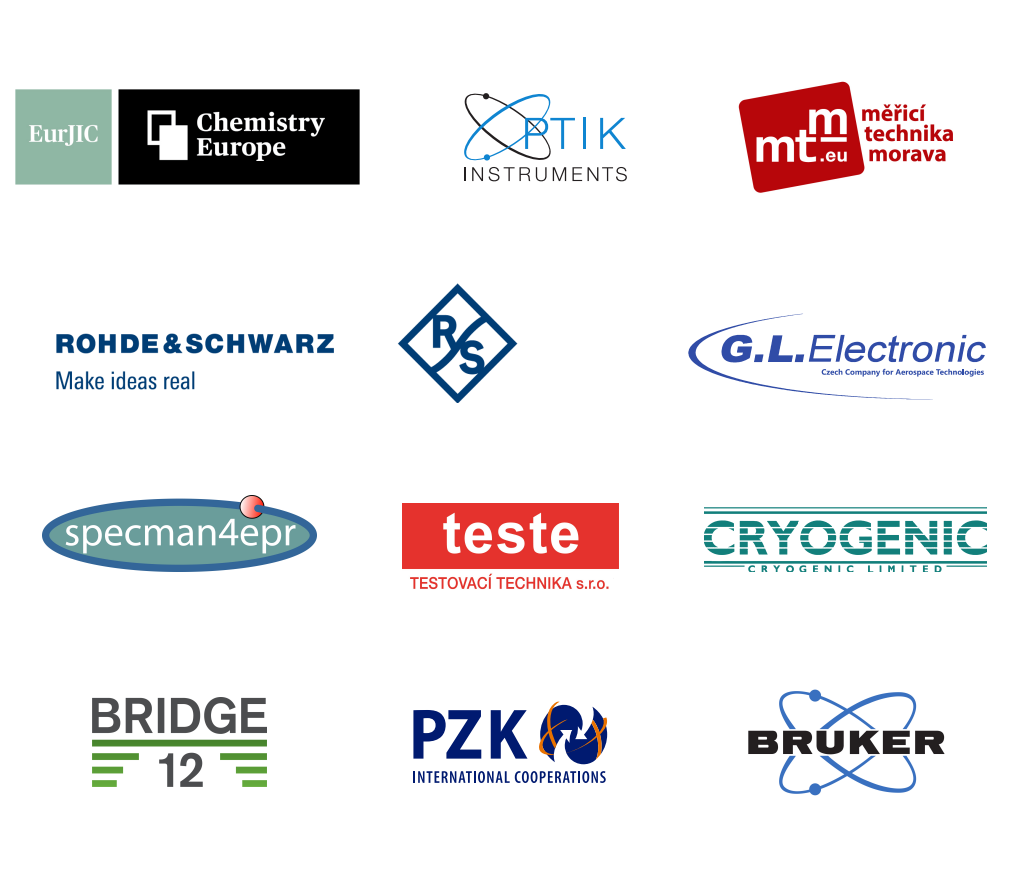About event
The Advances in Magnetic Resonance international workshop aims to bring together experts in magnetic resonance spectroscopy. During the 2-day workshop, the speakers will deliver lectures covering all the aspects of magnetic resonance: hardware and method development, application, use of chemistry, and magnetic resonance imaging. This comprehensive overview will be very helpful for beginners in magnetic resonance as well as for advanced users, allowing them to deepen their knowledge and stimulate new ideas.
Speakers & Topics
Thomas Prisner
Goethe University Frankfurt, Germany
 High-field / High-frequency pulsed EPR spectroscopy
High-field / High-frequency pulsed EPR spectroscopy
High-field (> 3T), High-frequency (>90 GHz) EPR spectroscopy is an important tool to uniquely identify organic radicals by their anisotropic g-tensor components, which becomes resolved at this magnetic field strength. In addition, high-frequency EPR is a necessary requirement for many high-spin paramagnetic centers in molecules or solids, which exhibit large zero-field splitting. In this presentation, I will describe how the well-resolved g-tensor components of nitroxide spin-labels rigidly attached to biomolecules allow obtaining additional orientation selective information on the biomolecule. High-field G-band (6.4 T/180 GHZ) PELDOR (Pulsed Electron-Electron Double Resonance) measurement of DNA and RNA molecules, labeled with rigid cytosine-derived nitroxide spin labels in two double-helical parts of the molecule, allows to determine the distance and angles between these two helices. This allows for the mean arrangement between two helices from a double spin-labeled sample to be obtained. Additionally, measurements performed in the frozen state of the sample at low temperatures (70K) reflect the full conformational flexibility the molecule can adapt. Applications to rather rigid double helices and more flexible aptamers and comparison or combination with other spectroscopic methods, such as FRET, NMR, or computational methods as MD, demonstrate the importance and accuracy of this method to determine the dynamics and structure of biomolecules.
Dennis Kurzbach
University of Vienna, Austria
 Methodology and Applications of Dissolution Dynamic Nuclear Polarization
Methodology and Applications of Dissolution Dynamic Nuclear Polarization
Dissolution dynamic nuclear polarization (d-DNP) stands as a versatile technique for amplifying nuclear magnetic resonance (NMR) spectroscopy signals. This method significantly enhances signal intensities by up to four to five orders of magnitude, promising advancements across diverse applications. From real-time tracking of chemical or biological processes to metabolomics and in-cell inquiries, d-DNP holds immense potential. This introduction sheds light on the methodology and recent developments behind DDNP as well as on potential avenues for the development and utilization of d-DNP in biochemical and physicochemical investigations. It delineates how researchers from various disciplines such as chemistry, biology, and physics can harness d-DNP as a robust characterization tool in their respective studies.
Thierry Dubroca
National High Magnetic Field Laboraty (NHMFL), US
 Dynamic Nuclear Polarization in liquids at High Magnetic Fields
Dynamic Nuclear Polarization in liquids at High Magnetic Fields
Liquid state nuclear magnetic resonance (NMR) has become ubiquitous in chemistry departments, pharmaceutical companies, petroleum industry and generally anywhere compounds need to be identified and their structures resolved. A major issue in NMR is the low sensitivity due to nuclei’s small gyromagnetic ratios. At the National High Magnetic Field Laboratory, we take advantage of dynamic nuclear polarization (DNP), to hyperpolarize nuclei and dramatically increase NMR sensitivity. In short, DNP takes advantage of the much larger gyromagnetic ratio of electrons through a process in which electron spins transfer their larger polarization to the nuclei of interest. DNP in liquids is challenging, particularly at high magnetic fields, where resolution is needed to solve scientific questions. In this lecture, we will cover the polarization transfer mechanisms used in liquid DNP, the instrumentation necessary to apply the technique, and how to maximize the polarization transfer, which in turn greatly increases the NMR sensitivity.
Björn Corzilius
University of Rostock, Germany
 Site-specific dynamic nuclear polarization in biomolecular MAS NMR
Site-specific dynamic nuclear polarization in biomolecular MAS NMR
Solid-state NMR under magic-angle spinning is an important tool in many scientific fields, including structural biology and materials science. However, NMR’s inherently low sensitivity requires oftentimes long acquisition times or even renders many experiments unfeasible. Dynamic nuclear polarization can overcome this limitation by transferring much larger electron spin polarization to neighboring nuclei, thus enhancing their magnetization by up to several orders of magnitude. Typically, fast spin diffusion within the hyperpolarized 1H bath is taken advantage of in order to widely spread polarization over relatively large distances before transferring the 1H polarization to heteronuclei for detection or further evolution. This results in a fast and uniform enhancement of the whole NMR spectrum.
Interestingly, DNP also features the potential to site-specifically hyperpolarize nuclei and thus create spatial selectivity in the NMR spectrum. This is particularly useful in biomolecular MAS NMR where spectral crowding becomes a serious problem for large assemblies or complexes. In the presentation, two approaches to create site-specific DNP enhancement are introduced. (1) In site-specific direct DNP a metal ion polarizing agent is attached or bound to a biomolecule while direct DNP of heteronuclei such as 13C or 15N can yield electron–nuclear distance-dependent build-up of enhanced polarization. (2) Specific cross-relaxation enhancement by active motions under DNP (SCREAM-DNP) can provide site-specific channels for spontaneously transfer of enhanced 1H magnetization to heteronuclei in a hetNOE-type process. A detailed explanation of both mechanisms will be given and exemplary applications presented. Effects of uniform or sparse isotope labelling on nuclear spin relaxation, diffusion, and site-specificity of DNP as well as limitations of the techniques will be discussed. In conclusion, site-specific direct DNP with metal ions can provide additional, up to long-range distance constraints for structural modeling, while SCREAM-DNP has the power to yield spatially selective NMR spectra, for example, of sought-after biomolecular interfaces.
Jiří Kaleta
IOCB Prague, Czech Academy of Sciences, Czech Republic
 Use of NMR in the Investigation of Molecular Machines
Use of NMR in the Investigation of Molecular Machines
Regular two-dimensional arrays of surface-mounted molecular devices, including rotors, motors, and switches, comprise a distinctive category of extensively studied smart materials. These responsive systems have demonstrated the ability to alter the physical properties of surfaces, influencing factors like wettability, surface tension, adhesion, and luminescence.
The molecules that form these films usually consist of a photoswitch connected by a linker to an anchoring group(s). These photoswitches are freely transferable between various surfaces. However, the structures of the linkers and anchoring groups must be fine-tuned to fulfill the specific needs of the individual substrates (e.g., metallic vs non-metallic, solid vs liquid, etc.). Designing molecules of this kind is a challenging task that requires careful consideration of intermolecular spacing, the characteristics of the spacer and anchoring units, and the distance of the photoswitch from the surface.
In this presentation, we will explore two distinct approaches to creating these systems: one centered on supramolecular host-guest interactions and the other on self-assembly at a liquid-gas interface. The latter method has yielded photoresponsive mono- and bilayer systems with well-defined properties, employing rod-shaped molecules equipped with different photoswitches. The layers consisting of the same types of photoswitches, such as diarylethene-based switches and unidirectional light-driven molecular motors, were selectively activated using appropriate monochromatic light.
Michal Kern
University of Stuttgart, Germany
 Integrated Circuits in Magnetic Resonance
Integrated Circuits in Magnetic Resonance
In this talk, I will provide an overview of the developments and applications of integrated circuit technology for nuclear magnetic resonance (NMR) and electron paramagnetic resonance (EPR). These magnetic-resonance-on-a-chip technologies make these techniques more accessible to a larger audience thanks to lower costs, allow for new applications thanks to their portability, and enable unique experiments. Thanks to their small size, the combination of these technologies allows for compact dynamic nuclear polarization (DNP) systems, which I will discuss in more detail.
Andreas Berg
Medical University of Vienna, Austria
 Magnetic Resonance Microscopy on an Ultra-High-Field Human MR-Scanner for HD 3D Dosimetry of Ionizing Radiation
Magnetic Resonance Microscopy on an Ultra-High-Field Human MR-Scanner for HD 3D Dosimetry of Ionizing Radiation
At the Medical University of Vienna an Ultra-High-Field (UHF, B = 7T) Magnetic Resonance (MR) tomograph for human applications has been additionally equipped with a prototype strong microscopy insert. This system offers unique additional advantages with regard to Signal-to-Noise-Ratio (SNR), magnetic field gradient encoding and spatial resolution. Out of the multifield applications ex-vivo, in-vitro and polymer materials, possible with this high-resolution MR scanner system, the results of a pilot project in cooperation with Radiation Oncology and MEDAUSTRON are presented: the visualization of the dose distribution of small pencil beams at few mm diameter of accelerated proton particle beams (E = 62 MeV) with high potential interest for the treatment of small tumours and metastases. The methodical principles for a) MR-microscopy at spatial resolution of about 32 µm using radio waves at wavelength of several cm, b) the in-house manufacturing of the polymer gel detectors for dosimetric imaging and c) generation of pencil beams of ionizing radiation are outlined.
Olivier Ouari
Aix Marseille University, France
 Sensitivity-enhanced solid-state NMR via dynamic nuclear polarization: a radical point of view
Sensitivity-enhanced solid-state NMR via dynamic nuclear polarization: a radical point of view
Dynamic nuclear polarization (DNP) is a consensus strategy to overcome the well-recognized sensitivity limitations of nuclear magnetic resonance (NMR) experiments. In particular, DNP-induced sensitivity enhancements have been demonstrated in magic-angle-spinning (MAS) NMR experiments on various systems in 1D and 2D solid-state NMR experiments that are otherwise difficult or unfeasible, even with isotope labeling. In DNP experiments, the comparatively high electron spin polarization of the polarizing agents (PAs) is transferred to nuclear spins via microwave irradiation. The source of unpaired electrons is vital for efficient microwave-driven DNP and has been the subject of high interest.
Polarization is typically transferred from unpaired electrons of a PA to nearby proton spins. In solids, this transfer is followed by the transport of hyperpolarization to the bulk via 1H-1H spin diffusion. The efficiency of these steps is critical, but the pathways for polarization transfer in the region near the unpaired electron spins are unclear.
Here, we report a series of biradicals to probe the role of 1H on and around the unpaired electron on MAS DNP at 9.4 and 21 T at 100K. Additionally, we will present our recent development on optically enhanced solid-state 1H and 13C NMR spectroscopy. This approach relies on photochemically induced dynamic nuclear polarization (photo-CIDNP), in which light is used to excite a donor-acceptor system, creating a radical pair whose evolution and decay generate nuclear hyperpolarization.
Organized guided tours:
- CEITEC MOTeS EPR laboratory: https://spectroscopy.ceitec.cz/
- Institute of Scientific Instruments: https://www.isibrno.cz/en
- CEITEC MUNI – MRI facility: https://mafil.ceitec.cz/en/
- CEITEC MUNI – National NMR facility: https://nmr.ceitec.cz/
More information
Sponsors
The workshop fee is CZK 1000. The price includes VAT and covers the programme, T-shirt and refreshments.
The registration is open until 30 September, 2024.
Should you have any questions, please contact us at pr@ceitec.vutbr.cz.


 Share
Share


